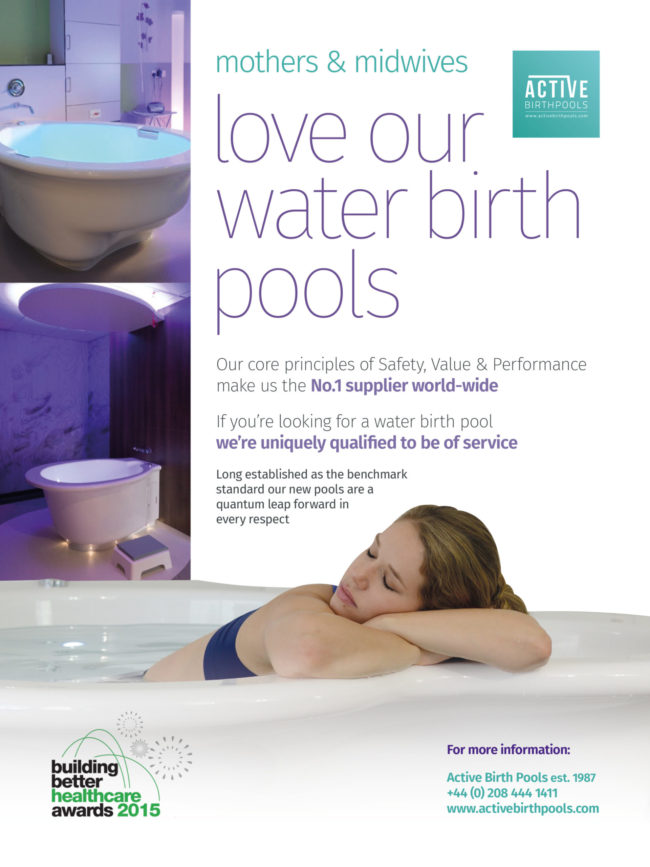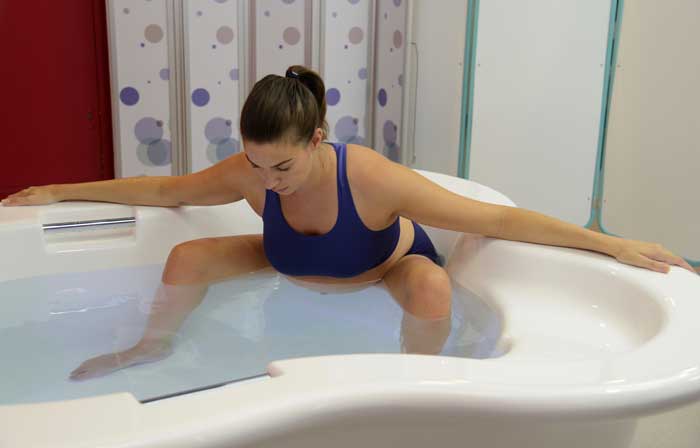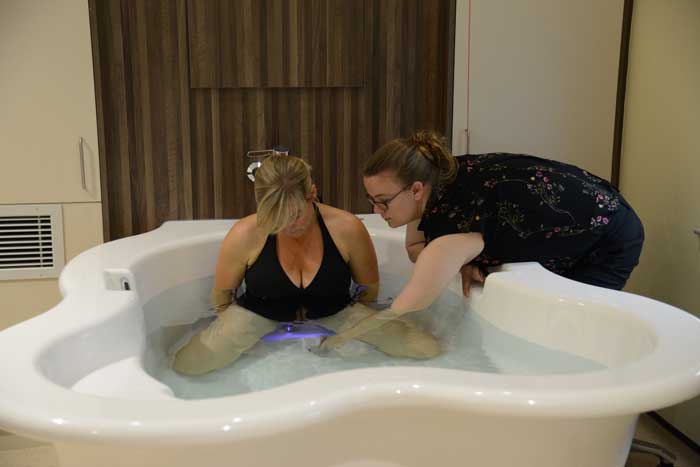Randomised controlled trial of labouring in water compared with standard of augmentation for management of dystocia in first stage of labour
Objectives:
To evaluate the impact of labouring in water during first stage of labour on rates of epidural analgesia and operative delivery in nulliparous women with dystocia.
Design Randomised controlled trial.
Setting University teaching hospital in southern England.
Participants 99 nulliparous women with dystocia in active labour at low risk of complications.
Interventions Immersion in water or standard augmentation for dystocia (amniotomy and intravenous oxytocin).
Main outcome measures:
Primary: epidural analgesia and operative delivery rates.
Secondary: augmentation rates with amniotomy and oxytocin, length of labour, maternal and neonatal morbidity including infections, maternal pain score, and maternal satisfaction with care.
Results:
Women randomised to immersion in water had a lower rate of epidural analgesia than women allocated to augmentation (47% v 66%, relative risk 0.71 (95% confidence interval 0.49 to 1.01), number needed to treat for benefit (NNT) 5).
They showed no difference in rates of operative delivery (49% v 50%, 0.98 (0.65 to 1.47), NNT 98), but significantly fewer received augmentation (71% v 96%, 0.74 (0.59 to 0.88), NNT 4) or any form of obstetric intervention (amniotomy, oxytocin, epidural, or operative delivery) (80% v 98%, 0.81 (0.67 to 0.92), NNT 5).
Conclusions:
Labouring in water under midwifery care may be an option for slow progress in labour, reducing the need for obstetric intervention, and offering an alternative pain management strategy.
(Extract from abstract of Randomised controlled trial of labouring in water compared with standard of augmentation for management of dystocia in first stage of labour by Elizabeth R Cluett, Ruth M Pickering, Kathryn Getliffe, Nigel James, St George Saunders published in British Journal of Midwfery January 26, 2004)










